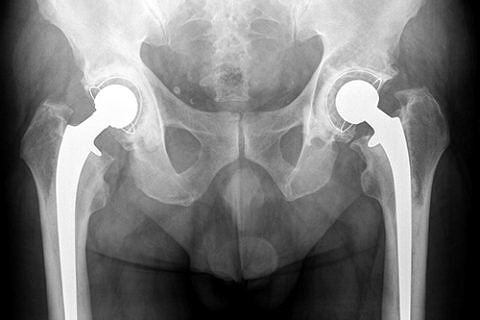3D X-ray dark-field reconstruction
FAU researchers develop new X-ray imaging technique
Researchers at FAU are currently working on making cutting-edge X-ray technology even more sophisticated. Their aim is to use X-ray dark-field imaging to create three-dimensional reconstructions of the material composition of objects in order to gather new information about their material structure.
The researchers’ ultimate goal is for this method to be used in medical imaging and in non-destructive testing in industry as a more effective way of examining the structure of materials or human tissue.
In the field of medical imaging, this would be the first time that such a procedure could be used on patients. The German Research Foundation (DFG) is funding the collaborative research project that is being carried out by the Pattern Recognition Lab and the Chair of Experimental Physics (Particle and Astroparticle Physics) with 500,000 euros.
The technique known as X-ray dark-field imaging is a relatively new method that can be used to examine the composition of a material visually on the smallest scale – smaller than the resolution that can be achieved in an X-ray image and therefore smaller than a pixel. This is made possible by a Talbot-Lau interferometer.
‘Not many research groups in Germany are able to take dark-field images using Talbot-Lau inferometry,’ says Prof. Andreas Maier from the Pattern Recognition Lab. ‘In the interferometer there are several micro-structure gratings between the X-ray source and the detector which prepare the X-ray waves in such as way that the smallest change in the direction of the X-rays can be measured,’ Prof. Maier explains.
Three types of images are produced: the well-known X-ray image that shows the absorption of the X-rays, a phase-contrast image and a dark-field image. While for the phase-contrast image the tiny changes in the direction of the X-rays that occur as they penetrate the material are used to visualise objects, dark-field images describe irregularities in the X-ray waves caused by tiny structures that are smaller than a pixel.
Dark-field imaging therefore provides information on variations in the structure and density of the material being examined. This technique can be used to visualise the smallest changes in materials, such as microcracks. In medicine it is used in X-ray diagnosis as it allows diseased tissue to be more effectively distinguished from healthy tissue, for example.
The Erlangen-based researchers are now using dark-field images to create three-dimensional reconstructions. To do so the team led by Prof. Gisela Anton from FAU’s Chair of Experimental Physics (Particle and Astroparticle Physics) is developing a Talbot-Lau interferometer that moves in a spiral around the object it is scanning. Their computer scientist colleagues are writing the algorithms for the interferometer. The information gathered will then be used to create three-dimensional reconstructions of the objects scanned.
Spiral scanning is a common technique that is used in CT scans in which a table with the object or patient on it moves forward as the scanner rotates. ‘The big advantage of spiral scanning is that a dataset with directional structures can be recorded without the need to re-position the object to take multiple images,’ says project leader Shiyang Hu.
Dark-field images are currently only able to depict the orientation of fibres and structures in two dimensions. In addition, the technique could be suitable for use in medical imaging, as patients would be exposed to less radiation than in other procedures.
Further information:
Prof. Dr. Andreas Maier
Phone: +49 9131 8527883
andreas.maier@fau.de
